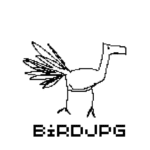Non-Fungible Tokens, or NFTs, have taken the digital world by storm, offering a novel way to represent ownership of unique assets, be they physical, digital, or intangible. The XRP Ledger has embraced this trend by natively supporting NFTs, opening up exciting possibilities for creators and collectors alike.
Understanding Fungibility:
Before delving into NFTs, it's crucial to grasp the concept of fungibility. In essence, fungible items are interchangeable with one another, and each unit is identical to the next. An everyday example of fungibility is a postage stamp—you can replace a lost one with another of the same denomination.
However, there are exceptions to fungibility. Consider the case of the “Inverted Jenny” postage stamps from 1919, where a printing error made them unique. Only 100 of these stamps were circulated, making them exceedingly rare and non-fungible. Each “Inverted Jenny” stamp is distinct and valuable in its own right, commanding a hefty price tag of over $1.5 million today.
To represent digital assets with similar uniqueness and value, the XRP Ledger introduces the concept of Non-Fungible Tokens, often referred to as NFTs, defined by the XLS-20 standard.
NFTs on the XRP Ledger:
On the XRP Ledger, NFTs are represented as NFToken objects. These tokens are exceptional because they are unique, indivisible units, and unlike fungible tokens, they are not designed for payments. NFTs empower users to create, possess, trade, and even destroy these one-of-a-kind tokens.
To optimize storage space, the ledger can store up to 32 NFToken objects owned by the same account in a single NFTokenPage object. This means that an account's reserve requirement for NFToken objects only increases when a new page is needed to store additional tokens.
Additionally, users can designate an “Authorized Minter” or broker who has the authority to mint and sell NFToken objects on their behalf.
NFT Lifecycle:
The lifecycle of an NFT on the XRP Ledger involves several key steps:
- Minting: Anyone can create a new NFToken using the NFTokenMint transaction type. The NFToken is stored on the NFTokenPage object of the issuing account.
- Offering: Either the owner or interested parties can initiate buying or selling NFTokens by sending a NFTokenCreateOffer transaction. The ledger tracks these proposed transfers as NFTokenOffer objects. These offers can be accepted, modified, or canceled.
- Transfers: If the NFT is transferable, it can be traded between multiple accounts. However, some NFTs may have restrictions on transfers, allowing only direct transfers between the issuer and holder.
- Destruction: Owners have the option to destroy their NFTs using the NFTokenBurn transaction. If the issuer has enabled the tfBurnable flag, they can also burn the token, irrespective of the current owner.
The XRP Ledger's embrace of Non-Fungible Tokens marks a significant step in the evolution of blockchain technology. It offers a versatile platform for representing unique digital and physical assets, enabling creators and collectors to explore new horizons. As the NFT ecosystem continues to expand, the XRP Ledger stands as a promising hub for innovation and creativity in the world of blockchain-based assets.


